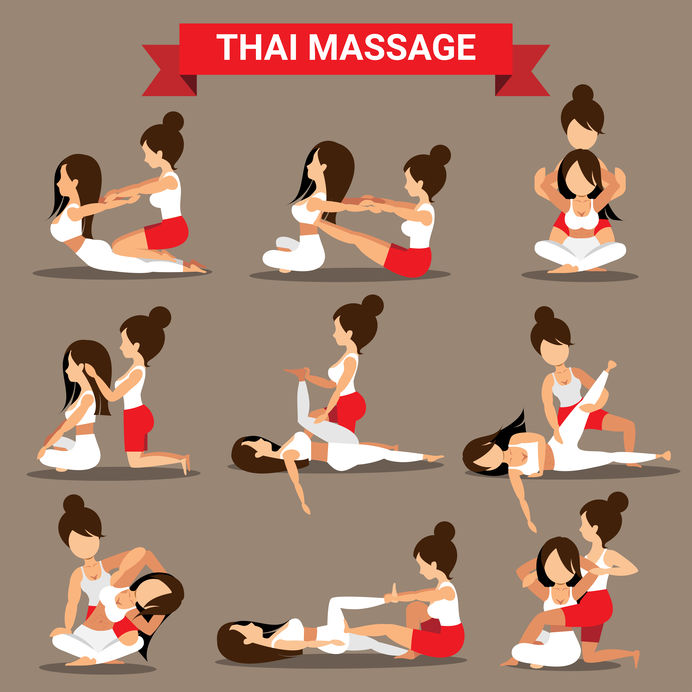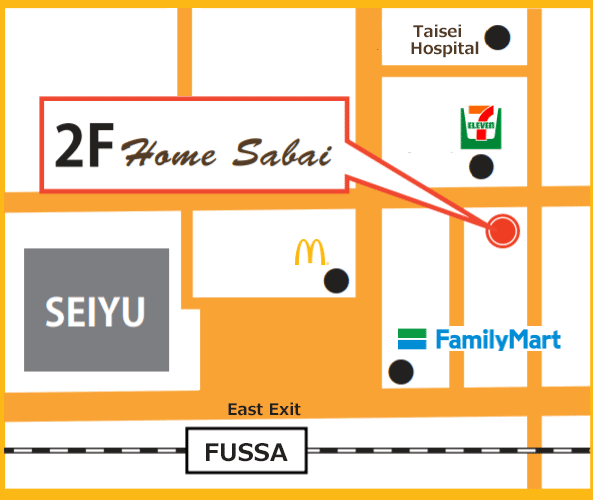What is Thai Traditional Massage
Index
Health benefits of Thai traditional massageHistory of Thai traditional massage
Theoretical basis of Thai traditional massage
Basic Thai Traditional Massage
Evolution of Thai Traditional Massage
Thai traditional massage for athletes
Those who should not receive Thai traditional massage
Health benefits of Thai traditional massage
Traditional Thai massage has many effects, from reducing stress to reducing muscle tension.First we will discuss the five health benefits of Thai traditional massage
1.Reducing stress
Stress serves as a positive motivation that encourages people to achieve better performance and achieve more in their work and life. However, excessive stress can negatively affect mental and physical health. Chronic or long-term stress can lead to serious illnesses such as depression and cardiovascular disease. Thai traditional massage uses gentle pressure and stretching techniques to relax the mind and body.2. Increase energy and mental stimulation
Traditional Thai massage techniques are based on the concept of energy rays or sen. We believe that there are various energy sens or channels in the human body. Sen supports various parts of the body, including bones, muscles, blood, and nerves. Some sens also affect mind and consciousness. These are called subtle channels. Theory suggests that tight muscles cause blockage within different Sen. These obstructions reduce the flow of life energy, resulting in stiffness, pain, and illness. Thai traditional massage uses various techniques to open and contract various sens to modify the energy flow of life3. Relieve headaches
An effective treatment for people with chronic tension headache4. Stimulates circulation
Thai traditional massage can use gentle stretches to promote both blood and lymph circulation. These yoga-like stretches promote blood circulation and fill body tissues with oxygen. This will help promote cell growth and heart health. We believe that it improves blood circulation and stimulates the somatosensory system. This is a system that plays a major role in balance.5.Improved range of motion
A gentle and gentle stretch increases the flexibility of a person over time and allows a wider range of movement. Thai traditional massage improves the circulation of fluid or synovial fluid within the joint and reduces friction between joints. This improves joint mobility and range of motion.
History of Thai traditional massage
Nuad Boran (known in various forms in Thai traditional massage, Thai yoga massage and other terms) about 1,000 years ago.Along with the introduction of Buddhism, it developed in a Thai temple. Based on healing principles similar to other Oriental healing arts, the Thai system focuses on the cycle of life energy in a major pathway called sen. Manipulate energy lines and stimulate critical pressure points along these pathways to eliminate blockages, stimulate energy flow, and restore balance and harmony. It was also performed as part of medical care at the court, and the Ayutthaya era literature “Herbal medicine of the King Narai” records that massage was used as a treatment in the court.
There was a position of masseuse in the court, which was relatively high.
Most of these were lost when the Burmese invaders destroyed the old capital of Ayutthaya in 1767. However, the remaining fragment was commissioned to be redrawn as a slab by Rama III in 1832, and the famous Wat Pho temple complex in Bangkok Thai traditional massage has been established.
Theoretical basis of Thai traditional massage
The theoretical foundation of Thai traditional massage is rooted in the belief that all life is supported by life forces (lom) carried along an invisible path (sen) through our bodies.This force is drawn from the air, water, and food, and blockage along these pathways is thought to cause illness and dysfunction.
Therefore, the purpose of Thai traditional massage is to release this trapped energy, stimulate the natural flow of vitality and maintain the general balance of health.
Basic Thai Traditional Massage
Thai Traditional Massage is a traditional Thai healing system that combines wide and targeted acupressure, stimulation and manipulation of energy rays called Sen, and an assisted yoga posture. When the client is completely relaxed and breathes deeply, the therapeutic effect is enhanced. This traditional treatment, called nuad or nuad boran in Thai, is very different from Western massage therapy.Traditional Thai massage does not use oil or lotion, and the recipient remains dressed during treatment. There is always physical contact between the practitioner and the client, but instead of rubbing the muscles, the body is compressed, pulled, stretched and shaken to remove the energy blockage and relieve tension. The practitioner uses the thumbs, palms, forearms, elbows, knees, and feet to make movement dances on the recipient's body. This process opens joints, stretches muscles and tendons, tightens internal organs, and balances energy.
Deep relaxation, rejuvenation, physical and mental well-being are enjoyed as an overall effect.
For Thai traditional massage, clients usually lie on the floor. A qualified massage therapist slowly moves the client's body through various stretches. The therapist uses the hands, knees, legs, or feet to allow the human body to be manipulated in various positions.
It usually does not cause pain or discomfort, but if you feel pain or discomfort, you should immediately contact a massage therapist.
It is recommended to drink enough water after Thai traditional massage.
Evolution of Thai Traditional Massage
In the description in the previous section, the characteristic of Thai traditional massage is that oil and lotion are not used. However, in the process that Thai traditional massage clients are widely spreading to non-Thai people, Oil massage has become popular as a treatment for people with dry skin and weak skin.
Peppermint is a popular oil to use, but odorless oil can be provided if desired.
In addition, with the spread of sports, sports massage for body maintenance after sports (we call body massage in our shop) Has appeared.
Thai traditional massage for athletes
Athletes are prone to fatigue, muscle pain, joint pain and injury during training. For this reason, many athletes work with professional sports massage therapists.Sports massage combines assist stretching and various massage techniques to treat sports injuries and improve athletes' range of motion. The practitioner often uses assistive stretching to target specific areas of the body or specific muscle groups. Thai traditional massage gradually stretches the entire body, allowing the person to relax. The dynamic stretches used by Thai massage practitioners may provide deeper and more resilient stretches than some assistive stretch techniques of sports massage. Relaxation combined with Thai traditional massage helps people recover mentally and physically.
Those who should not receive Thai traditional massage
People of all ages can receive Thai traditional massages, but they are not suitable for everyone. People with certain health conditions such as cancer or cardiovascular disease, pregnant women, or people who have just undergone surgery should not receive Thai traditional massage ・ High blood pressure
・ Diabetes
・ Heart disease
・ Osteoporosis
・ Neurological disorders affecting the spinal cord
・ Coronary artery disease
・ Pregnant women


